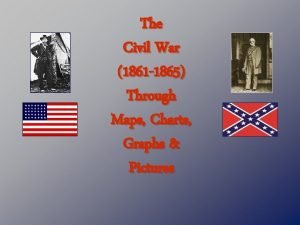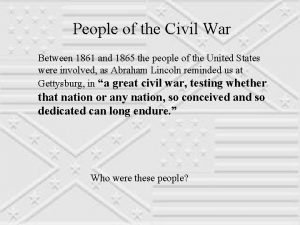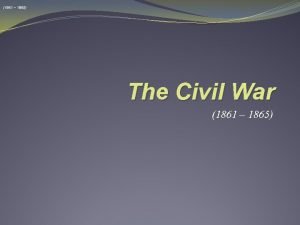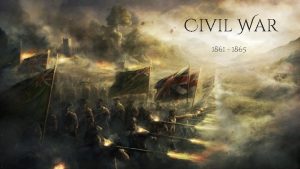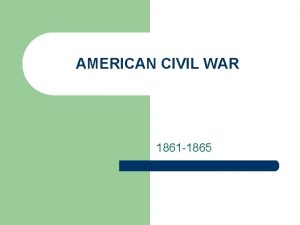Civil War 1861 1865 146 Sectionalism and Slavery





- Slides: 5

Civil War 1861 -1865 # 146 Sectionalism and Slavery Sectionalism is loyalty or support of a particular region or section of the nation, rather than the United States as a whole. Slavery was particularly a sectional issue, dividing the country into North and South to the extent that it led to the Civil War; for the most part, southerners supported slavery and northerners opposed it.

Civil War 1861 -1865 # 147 Slavery and States’ Rights is a term used to describe the ongoing struggle over political power in the United States between the federal government and individual states as broadly outlined in the 10 th Amendment. The states' rights issue became strong in Confederate states and resisted virtually all efforts to exert national authority.

Civil War 1861 -1865 # 148 Slavery The North’s expanding manufacturing economy relied on free labor in contrast to the Southern economy’s dependence on slave labor. Some Northerners did not object to slavery on principle but claimed that slavery would undermine the free labor market. ● Defenders of slavery based their arguments on racial doctrines, the view that slavery was a positive social good, and the belief that slavery and states’ rights were protected by the Constitution. ● 24% of white southerners owned slaves or belonged to a slave owning family ➔ Of slave-owning families: 83% of the families owned 9 or fewer 76% of white southerners did not own slaves

Civil War 1861 -1865 # 149 Free Blacks On the eve of the Civil War in 1860, there were a total of 488, 070 free blacks living in the United States, about 10 percent of the entire black population. Free Blacks in the South numbered about 250, 000. Some owned property. They were prohibited from working certain occupations & couldn't testify against whites in court. In the North, freemen and Irish immigrants competed for jobs creating tensions. Free blacks in the South largely resided in cities. Maryland was the state with the largest population of free blacks in 1860— 83, 942

Civil War 1861 -1865 # 150 Dred Scott v. Sanford An 1857 Supreme Court decision that rejected the claim of a slave (Dred Scott), who argued that time spent with his owner in regions that did not allow slavery which made him a free man. The Supreme Court decision stated: ➔ Blacks were not citizens and therefore could not sue in federal courts ➔ Because a slave is their master's property, they can be taken into any territory and held there in slavery ➔ Congress had no power to ban slavery from the territories Resulted in increased sectional tension and split the Democratic party.
